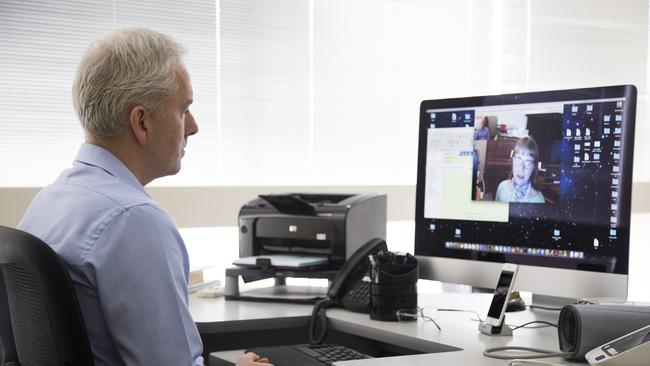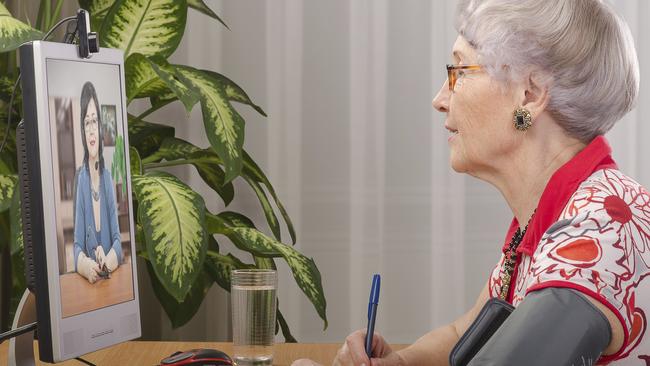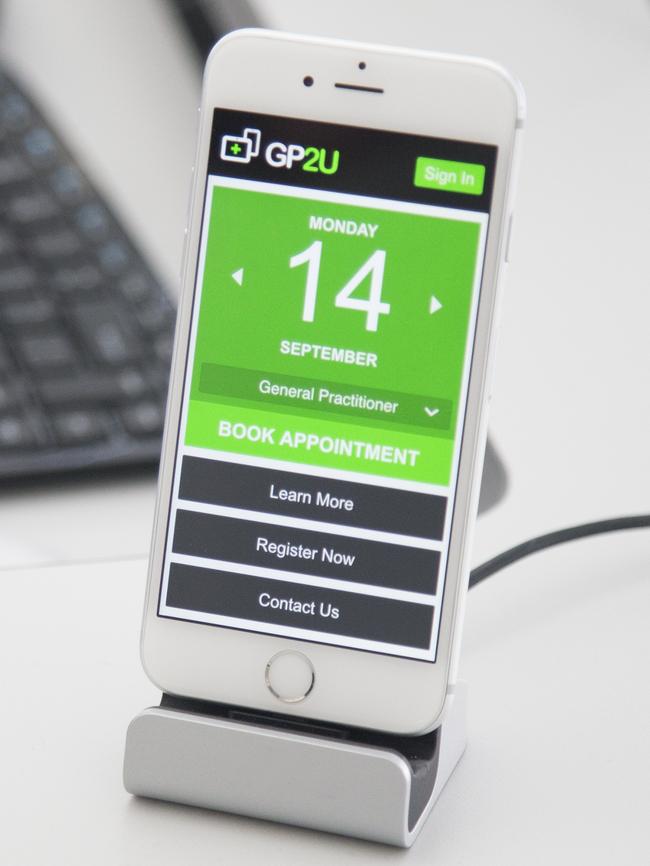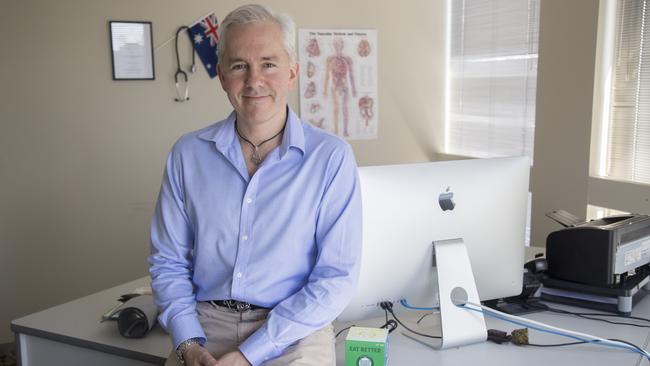GP2U: Smartphone app brings the doctor to your phone
Feeling unwell but too busy to visit a GP? Open an app and a doctor will check you out.

A new kid on the block in telehealth medicine is sailing in uncharted waters.
Fire up a smartphone app and you’re on your way to visiting a virtual clinic, even waiting in a virtual waiting room, before your appointment with a GP or specialist possibly thousands of kilometres away.
GP2U is one of a new breed of GP online clinics that offers this. Telehealth is a well-established practice for healthcare in remote locations. Now it’s available to city folk, too.
Being able to videoconference with your doctor on your smartphone or via a weblink is of obvious value to immobile people, those without transport, the elderly and parents facing logistic difficulties getting kids to the doctor.
But does this compromise medicine delivery?
For younger, tech-savvy generations, it’s about convenience and saving time. This is new age medicine for the millennials and gen Y parents. Squeezing in an online consultation during a busy workday without leaving the office, or on the phone in the train, has its appeal.
This new era of mobile and PC-connected consultations goes further than video chat. It takes in patients using blood pressure devices capable of uploading data to the doctor. And there are apps that help patients take photos of their skin for uploading to a skin cancer specialist.
“With access to fast broadband, everything from testing blood pressure and skin cancer checks to in-home monitoring for the elderly can be done online from the comfort of people’s homes,” says Sydney GP Ginni Mansberg.

Mansberg has been working with NBN Co on a telehealth study, which found 90 per cent of younger patients delayed a GP visit for reasons including avoiding wasting time, losing money and having to take days off work.
I ask Mansberg how you take photos of your back for a skin cancer test without at least needing help from a friend. “You can actually do it into a mirror,” she says, adding that new age blood pressure checking devices hook straight into a phone for its measurements to be uploaded.
She says these measurements can be more accurate than ones in a doctor’s surgery. “You often go to the doctor and you’re so tense, particularly if you’ve had an uphill battle to find a parking spot, and have sat there for two hours, your blood pressure is often not a good reflection.”
GP2U was founded five years ago by James Freeman, a doctor based in Tasmania with experience in rural and remote healthcare. The clinic didn’t see patients face-to-face, only online.
Chief executive Sam Holt says the clinic comprises four GPs and about 20 specialists including psychiatrists, some of whom consult exclusively online, dermatologists and cardiologists.
Patients carry out some of their own health measurements. A Melbourne-based firm, CliniCloud, carries digital thermometers and stethoscopes that let patients check their heartbeat, chest, lungs and temperature. “You record it just prior to the consultation,” Holt says.
Patients book appointments using the app and pay in advance. Typically a 15-minute appointment costs $69, a 30-minute one costs $90.

The online practice is coming close to seeing 30,000 patients since opening in 2011, Holt says.
“Our GPs will tell you that over 50 per cent of typical presentations in a day-to-day GP practice can be done online, everything from coughs, colds, UTIs (urinary tract infections),” he says. “Women who have recurrent UTIs typically know what they are. They’re looking for a script to alleviate their discomfort.”
Medical certificates, pathology orders and specialist referrals are other common requests.
GP2U seems to have a rosy future, with insurer HCF and medical diagnostics and pathology firm Sonic Healthcare investing $3.5 million. The service will be marketed to 1.3 million HCF customers and Holt expects 10 GPs will be on-board by midyear.
But there are issues. There’s no Medicare rebate for online consultations, although Holt expects that will happen some day. But what about the age-old practice of a GP checking your blood pressure during a visit, or checking your throat and listening to your chest when you have a bad cold? You can’t perform that across the internet.
Holt acknowledges that online consultations aren’t a replacement for a family doctor and they aren’t for everyone. He says GP2U’s patients typically present two to 2½ times a year; across the system it is about 4.8 times annually, so he estimates his patients visit a regular GP half the time.
He says GP2U doesn’t overbook appointments as many GP clinics do, a practice that continually sees appointments run behind time. Patients get their full 15 and 30 minutes, and GP2U faxes scripts directly to the patient’s preferred pharmacy.

The Australian Medical Association says it supports family doctors extending telehealth services to their patients but not dedicated online clinics.
“The concept’s good but the way it’s carried out is the issue. It should be with the usual GP,” says Brian Morton, chairman of the AMA Council of General Practice.
“We don’t support that sort of service when you fragment that care unless it’s done with the usual GP because of the need of continuity of care. The usual GP has the full history and knows when it is appropriate to do something. But it’s the way things are going.”
Morton says patients can request a prescription or referral on his practice’s website, but that is through their regular doctor.
Nevertheless, new modes of telehealth services are catching on, thanks partly to the pick-up in NBN internet speeds.
In Ballarat, Victoria, breast surgeon Ruth Bollard says her office is entirely internet based. She regularly videoconferences with patients, many of whom live three or four hours away. She also conducts three-way Skype calls with patients in their local GP offices. Patient files are stored in the cloud.
The CSIRO, meanwhile, is out to improve the technology around telehealth.
Australian e-Health Research Centre chief executive David Hansen says three telehealth trials have taken place in partnership with NBN.

One is a trial of a teleophthalmology clinic. A trained nurse-practitioner took photos that were forwarded to a city-based ophthalmologist for diagnosis.
It took place in the goldfields of Western Australia and in the Torres Strait Islands and identified eight people who needed immediate treatment to save their sight.
A second trial used telehealth to stay in contact with chronically ill patients at home.
It involved patients using a device to take their own health readings. Twenty-five patients at each of six sites took part.
The third was mobile-based health support that could replace an existing service. Instead of visiting a clinic, patients could be given cardiac rehabilitation advice while at home and be back at work within six weeks of a heart attack.
Hansen says telehealth is rarely used to guide operations but there have been extreme cases.
“There was the case of an American scientist in Antarctica who had a cancerous lump which had to be cut out and they did that with advice over the internet. But there’s no question that advice on demand will increasingly be part of healthcare,” he says.
